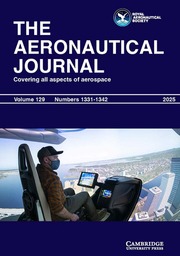No CrossRef data available.
Article contents
Benefit Potential of Continuous Climb Operations: A Case Study with Real-Flight Data
Published online by Cambridge University Press: 13 August 2025
Abstract
Air transportation significantly contributes to air pollution, making the reduction of fuel consumption and emissions critical for sustainable development. Continuous climb operations (CCO) have emerged as a promising approach to minimise the environmental impact of aviation, particularly during the climb phase, where fuel burn is highest. This study assesses the efficiency of vertical climb profiles using flight data from departures at Trabzon Airport. The analysis incorporates maximum thrust and maximum rate of climb constraints alongside clean configuration to design CCO profiles. These profiles are compared with actual flight data, revealing that CCO implementation could result in average savings of 5.1% in time, 8% in fuel and 7.5% in HC, 8.8% in CO and 5.8% in  ${\rm{N}}{{\rm{O}}_{\rm{x}}}$ emissions. The study highlights challenges in CCO implementation, particularly due to speed regime changes and flight procedure constraints, emphasising the need for enhancements in air traffic management to maximise CCO benefits in complex airspace environments.
${\rm{N}}{{\rm{O}}_{\rm{x}}}$ emissions. The study highlights challenges in CCO implementation, particularly due to speed regime changes and flight procedure constraints, emphasising the need for enhancements in air traffic management to maximise CCO benefits in complex airspace environments.
Keywords
Information
- Type
- Research Article
- Information
- Copyright
- © The Author(s), 2025. Published by Cambridge University Press on behalf of Royal Aeronautical Society


